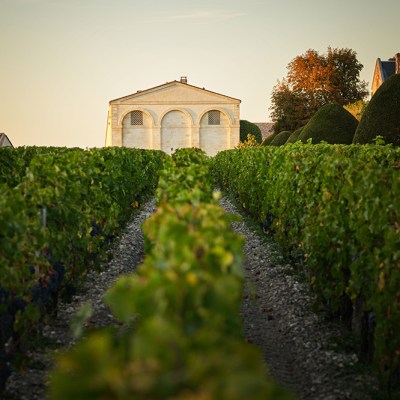From the April 2023 issue of Apollo. Preview and subscribe here.
Food was a priority for the men who dreamt up the Barbican. In an initial proposal for the site, which they submitted to the Corporation of the City of London in 1955, the architects Chamberlin, Powell and Bon argued that ‘it would be reasonable to include 60 shops, 2,000 garages, six public houses and four restaurants’ in this new residential district. With space at a premium, they deliberated over how to accommodate prefabricated modern kitchens in every flat on the estate, employing a firm of yacht manufacturers to mock up a galley-style kitchen that was then put through its paces, via an array of test meals, by the Gas Council.
Current Barbican residents often fetishise those original kitchens that survive. (Less venerated are the temperamental Garchey units, which flush food waste, when they’re working, from kitchen sinks into refuse tanks beneath the buildings.) Most of the restaurants and pubs, however, and indeed the scores of shops, were aspirations that never made it off paper. The architects envisaged the great concrete bow of Frobisher Crescent as part of a shopping precinct, but in the event the proposed retail units were given over to offices. There was one sulky little pub, the Crowders Well, marooned at the base of Andrewes House.
The Barbican Centre, which opened in 1982, has frequently applauded itself as an oasis in this hospitality desert. ‘The restaurant and catering services will be of interest to all those visiting the Centre,’ an early promotional pamphlet claimed. The upmarket option back then was The Cut Above, ‘a licensed carvery-style restaurant offering a choice of several roast joints’, as well as daily specials and à la carte dining in the evening. Its dining room, designed by David Hicks, was a cacophony of crimson walls and magenta upholstery – a palette that might have been prompted by the hunks of rare roast beef resting on the carvery counter.
‘The Barbican has something that Festival Hall does not: a major restaurant,’ wrote one commentator in the New York Times in 1985 after falling for ‘an escalope of salmon with a mousse of leeks and a sauce of white wine, port and cream’. The Cut Above was altogether a restaurant of its time, it seems, as have been the various fine dining options at the arts complex that have succeeded it (which for more than three decades have been devised and operated by the catering company Searcys). In the past decade Gin Joint (2013–16) and Osteria (2016–22) have come and gone.
The latest revamp has yielded the Barbican Brasserie, which opened in the autumn. The long, narrow room offers a fine, elevated view of the Barbican lake and St Giles’ Cripplegate beyond, or it would do if the windows didn’t look as though somebody had poured several pints of milk down them. The chairs and tables are pastiches of mid-century modern, perhaps a bulk buy from the furniture retailer made.com as it went into administration. There are racks of droopy house plants. There is bad art.
Thankfully, the food looks a lot better than the restaurant – and with generous portions at plausible prices, with two courses for £26 or three for £31 (including bread!). The starters sound clean and tempting, from a tomato tarte Tatin to smoked mackerel rillettes with pickled vegetables. A dish of braised pork cheeks is prettified with baby leeks and edible violet flowers: lipstick on a pig, perhaps, but the pork itself is soft and deliciously savoury, and carefully complemented by a sweet, chunky apple chutney and little mounds of mustard seeds that add crunch and an almost tannic note to the dish. A smoked eel and beetroot jam doughnut (£4.50 supplement) comes as a dainty bun accompanied by a liberal mound of celeriac remoulade. Cutting into it provokes a satisfying ooze of fishy cream, its modest smokiness well partnered with the subtle earthy sweetness of the beetroot. I’d be happy to work through a crate of them.
For a main course I order lamb parmigiana because it sounds so wrong, for all that lamb and aubergine are easy bedfellows. It is indeed a misstep: neither a parmigiana nor a moussaka, but a compression of meat, beef tomatoes and aubergine daubed with a passata-based sauce and crested with mozzarella. It looks like a snow scene grafted on to an erupting volcano. Tony Soprano would have wolfed it down but it proves heavy going for my lunch.
Far more sophisticated is a salmon Wellington (£9.50 supplement). This is a beautiful plate of food: two svelte slices of golden, latticed pastry hugging perfectly pink salmon, with a little jug of gleaming, shamrock-green nettle sauce. It is flawlessly cooked, the salmon moist and flaky, the pastry soft but crisp, all with a deep savouriness lent by the mushroom duxelles that cushions the fish.
The joy endures through an excellent, smooth semifreddo, its sweetness punctuated with nuggets of stem ginger and slivers of rhubarb which tickle the tongue like penny sweets. I’d sleep through a concert or performance at the Barbican Centre after all this, but it would be a blithe slumber. And were I a Barbican resident, I’d happily drop in to the Barbican Brasserie now and then – and be grateful to give the Garchey a rest.
From the April 2023 issue of Apollo. Preview and subscribe here.


